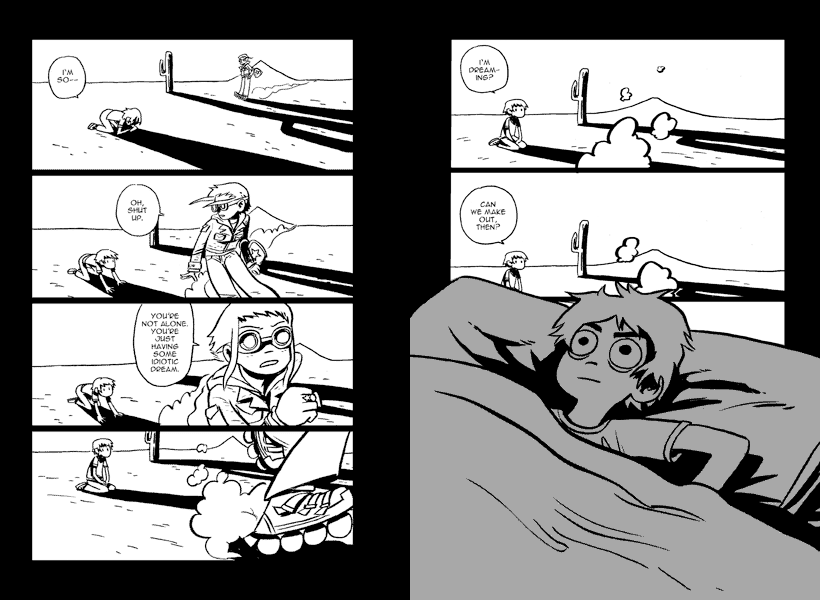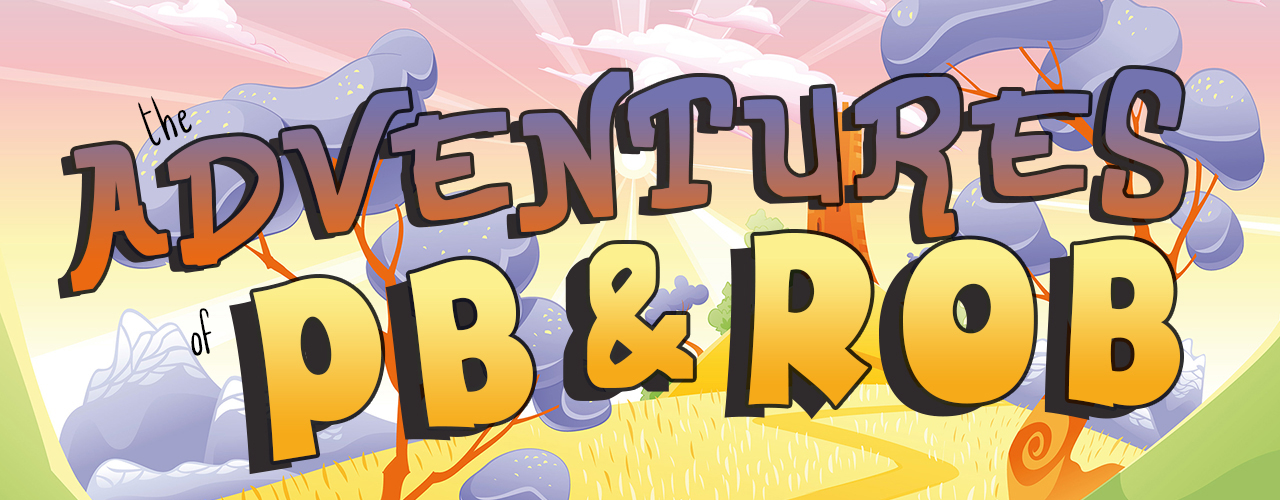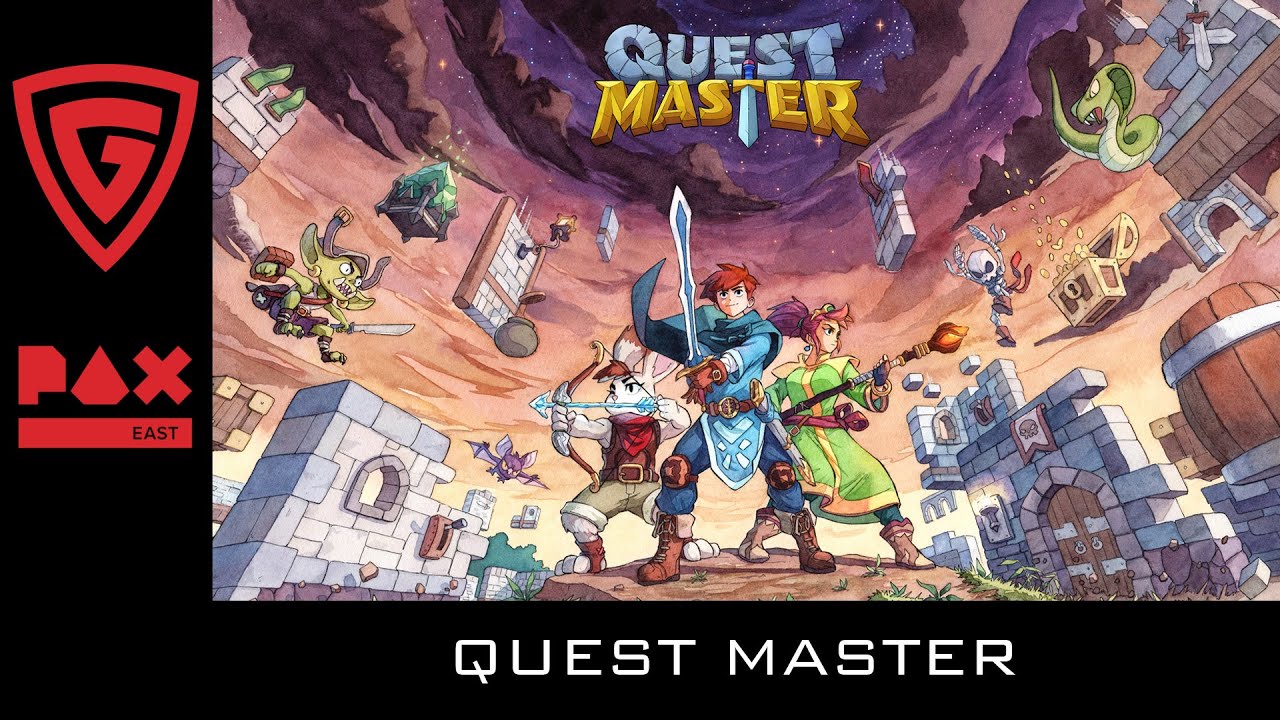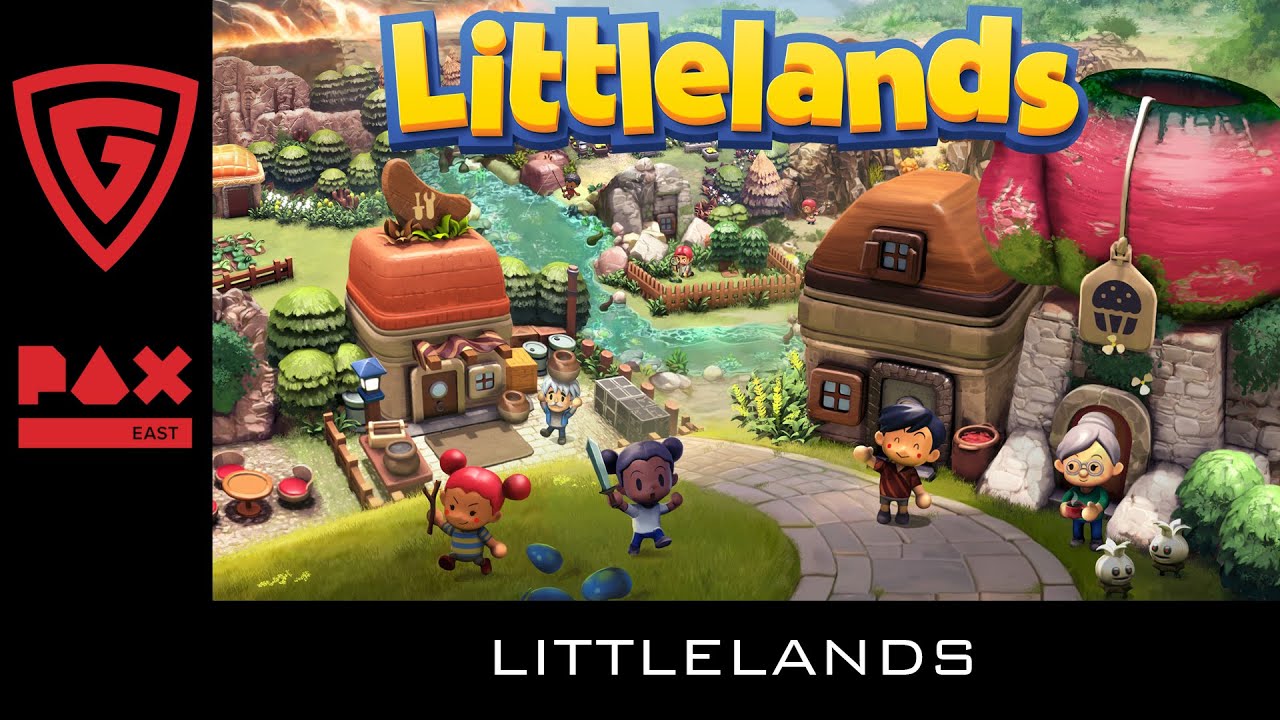The English language has evolved to the point where there’s gotta be a technical term for pretty much everything, but I don’t know what fits here. It’s like this: I like to be the guy who knows more than anybody else about any subject of discussion, so before I saw Edgar Wright’s film version of Scott Pilgrim vs. The World, I had to read all the graphic novels that inspired it. This led to a Monday evening spent trekking all over the greater Charleston area to find the first book of the series (every place I went had at least the second and third, nobody seemed to have the first) and as a result I devoted two evenings to plowing through the entire series before I saw the movie.
Obviously, I’m late to the party here – the first volume came out in 2004, which puts me in the position of reviewing a six year-old graphic novel that’s been reviewed to death since then. Thankfully, the Geek Generation doesn’t go quite that far back, so according to my Editor-in-Chief, I can get away with it.
The graphic novels are atypical given today’s landscape of comic adaptations. Despite the fantastic action sequences that pervade the books, they’re more in the mold of comic-to-film adaptations like Ghost World or American Splendor than your typical Batman or X-Men source material. Yeah, the books keep a few toes (if not a whole foot) in the super hero world, but they’re more slice of life than high-flying super hero material.
Due to the size of the books and writer/artist Brian O’Malley’s artistic style, the books are displayed in the Manga section of most book stores, which is a shame because their shelf placement is probably enough for most potential fans to over look them. The black-and-white Manga-style artwork does sometimes make it difficult to keep characters straight, but O’Malley is able to do enough with freckles, facial hair, hairstyles, and accessories to avoid distraction.
The first volume is primarily devoted to sketching in the details of Scott’s life and his network of friends. He plays bass in the band Sex Bob-omb (they suck), with snarky drummer Kim Pine and lead singer/guitarist Stephen Stills, the laconic “talent” of the group. He shares a crappy, one-room, one-futon apartment with Wallace Wells, a gay, bacon and alcohol-loving free spirit who Scott shamelessly mooches off of and turns to for advice. Rounding out the group are his sister Stacy (younger in years, more advanced in maturity), “Young Neil” (Stephen Stills’ roommate and the band’s lone, quiet groupie), and Julie Powers, Stephen Stills’ mean-spirited, on-again, off-again girlfriend.
Scott himself is pleasantly adrift – unemployed, sleeping well past noon every day, playing in a band – in other words, he’s basically just hanging out. He thinks his life is pretty awesome, even with the slight pathos of his absentee parents (gone to Europe) and the reminder of the high school home his parents left behind. On top of that, he’s dating a high schooler – the winsome Knives Chau – a relationship built on chaste bus rides, trips to the thrift store, and gossip about her classmates. To his friends, this is part of his recovery from an alluded-to-but-as-yet-unelaborated-upon relationship.
It’s only in his dreams that Scott allows himself to feel the depths of his loneliness, and that’s where the mysterious Ramona Flowers first rollerblades into his life. Before long, Scott sees her in the real world, orders some CDs from amazon.ca, and gets her to agree to go on a date with him.
Ramona’s a mysterious American, possibly broken up with the unseen Gideon back in New York, and although Julie forbids it, Scott pursues her. Their relationship develops over the course of a number of quiet moments – Scott is predictably smitten with this cool, mysterious girl, while Ramona is first amused by, then attracted to, Scott’s sweetness. This isn’t Rhett and Scarlett territory – Scott and Ramona are young and single in Toronto, and attractive, amiable company is enough.
The book’s video game elements were more downplayed than I was led to expect by the movie previews. Video games are referenced throughout, and characters are given “ratings”, but those elements don’t distract from the slice-of-life story O’Malley is telling. What’s truly impressive is the way O’Malley incorporates an Indy rock vibe (including lyrics and music you can play along with) into a medium for which it seems ill-suited.
The central conceit of the series is introduced as nearly an afterthought. Before his first date with Ramona, Scott receives an email from the mysterious Matthew Patel, who explains that he and Scott will soon be fighting. Scott, preoccupied with meeting Ramona, deletes the email before reading it through.
A lot of critical ink has been spilled discussing Scott’s battles with Ramona’s seven evil exes. The series is typically read as an extended metaphor for Scott learning to deal with Ramona’s relationship history. That’s a valid approach to the material and all, but I prefer to see it as a way for Scott to give his life a direction its been lacking. He begins the series without a purpose, and these battles give him one.
Scott’s interest in Ramona dooms his relationship with Knives. This is all pretty heartbreaking to see and is a big test of audience sympathy. Although Knives is clearly too young (and too good) for Scott, she’s a total sweetheart and Scott treats her pretty badly. A credit to the series is that Scott has to keep dealing with the fallout of the relationship for 5 more volumes.
The climactic event of the first volume is Scott’s fight with Matthew Patel – the first of Ramona’s Evil Exes – which begins without a shred of buildup. One moment, Scott is rocking out with Sex Bob-Omb, the next he’s engaged in a video game-style duel with an Indian mystic.
To take a step back from the proceedings for the moment, I have to admit that I like my comic books the way I like my comic book movies – full of super heroes and super powers. Six years ago, I probably wouldn’t have picked up Scott Pilgrim’s Precious Little Life just to read about the mundane adventures of a twenty-something Toronto slacker. Reading the books, I knew enough about the premise to anticipate the eventual appearance of Ramona’s Evil Exes and how the fights would play out, but I can imagine how jarring it must have been for readers picking up the book for the first time when they turned the page to Matthew Patel and his female hipster demons crashing the show.
On the page, the fight is brief and a little underwhelming. Scott and Matthew trade punches for awhile, with Scott clearly having the upper hand, before Matthew summons a mob of female hipster demons. Over the course of the fight, we learn that Matthew was Ramona’s 7th grade boyfriend (albeit briefly) and how they stuck it to the jock elite of their school.
Scott’s friends join him to defeat Matthew and his demon horde, which would work better if O’Malley didn’t try to frame the sequence in terms of improvised rock lyrics. The payoff of the battle works better – once Matthew is defeated, he dematerializes into a shower of coins in the first instance of the series’ best ongoing video game conceit.
The end of the book finds Ramona agreeing to date Scott and outlining the premise of the rest of the series – that Scott will have to defeat her Evil Exes if they’re going to continue to date. Scott is pleased and nonchalant at the prospect of further battles, but when Scott brings up Gideon, Ramona’s erstwhile boyfriend, her head begins to glow mysteriously as part of a phenomenon that will go unexplained for five more volumes.
It’s a promising start to the series, and I’m glad that I didn’t have to wait a year (as readers in 2004 did) to get to the next volume. The coda keeps the volume from being satisfying as a stand-alone installment, but it did succeed in drawing me into Scott Pilgrim’s precious little life.
[amazon-product alink=”0000FF” bordercolor=”000000″ height=”240″]1932664084[/amazon-product]




















Add comment